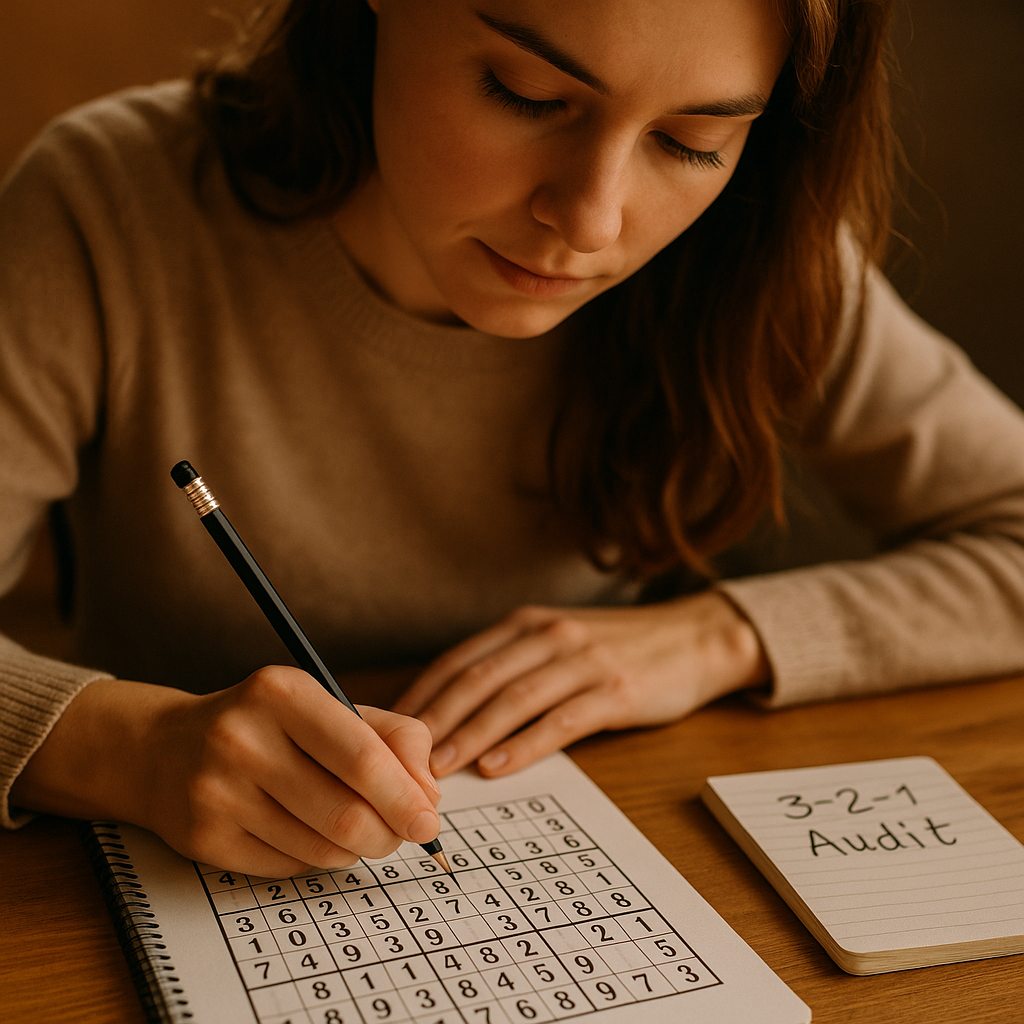
Coloring & Chains: Visual Logic That Makes Hard Grids Click
The first time I two-colored a digit, the board lit up: contradictions I’d been missing became obvious. Coloring and chains aren’t magic—they’re a visual language for hard logic. If expert puzzles feel opaque, this is your on-ramp.
Quick roadmap: you’ll learn two-color basics, a gentle chain rule, a digit-first drill, and how to measure impact using simple metrics (pattern-spot lag and contradiction hits). Want to try it live? Open free online Sudoku board and practice your first coloring pass.
Two-Coloring in 90 Seconds
Setup
Pick one digit (say “5”). In any unit where “5” appears in exactly two cells, assign colors A/B to those two cells. Propagate: if a colored “5” sees another “5” candidate in the same unit, that partner takes the opposite color.
Contradictions
If a unit ends up with two of the same color forced, that color can’t be true anywhere—eliminate that color across the board for this digit.
Placements
If a cell sees all candidates of one color, it must hold the opposite color’s digit.
Gentle Chains (XY-Style Intuition)
Think “if this, then that” along alternating candidate links. Follow a short chain (4–6 links) and see whether one assumption forces an impossibility. If so, flip the assumption.
Keep chains short and clear—you’re training visual logic, not writing a thesis.
Digit-First Coloring Drill
- Select one tough puzzle and one digit
- Color strictly for 3 minutes—no other moves
- Mark every contradiction you expose and the cells it unlocks
- Finish the puzzle normally and log: contradictions found, placements from coloring, time saved
Repeat with two different digits next session. On a fresh hard grid, you’ll often see faster breakthroughs by digit three.
Measure What Matters
- PSL (pattern-spot lag): time from first color to first elimination
- Contradiction hits: eliminations made by color conflicts
- Chain yield: placements achieved directly after a short chain
Reflective Questions
- Do you color one digit deeply or sample many digits shallowly?
- When chains branch, do you prune early or chase both lines?
- Are you documenting what coloring actually unlocks—or assuming it helps?
- Which digits on your board most often create clean two-candidate units?
Brain & Attention Note
Coloring externalizes working memory—less to juggle internally, fewer slips. Small wins compound: every contradiction removed lowers cognitive load for the next move.
Methodology & Workflow
We log color events (time stamped), contradictions, and subsequent placements; compare sessions with and without coloring.
Limitations: subjective chain tracing and board-specific effects.
Summary & Call to Action
Coloring and short chains turn “I’m stuck” into “I see it.” Keep chains short, track PSL, and celebrate contradiction hits.
👉 Ready to try? Open a Sudoku hard puzzle and run a 3-minute digit-first color sprint.

 German
German
 Japanese
Japanese
 Arabic
Arabic
 Spanish
Spanish
 French
French
 Russian
Russian
